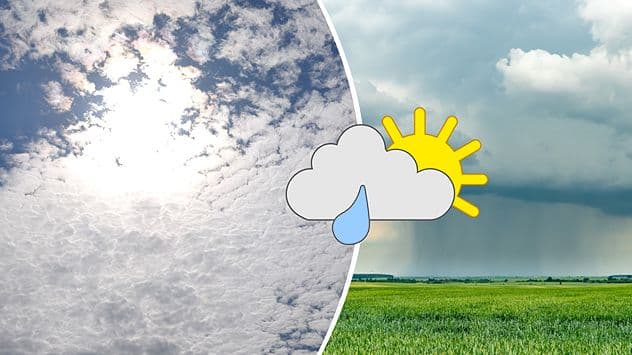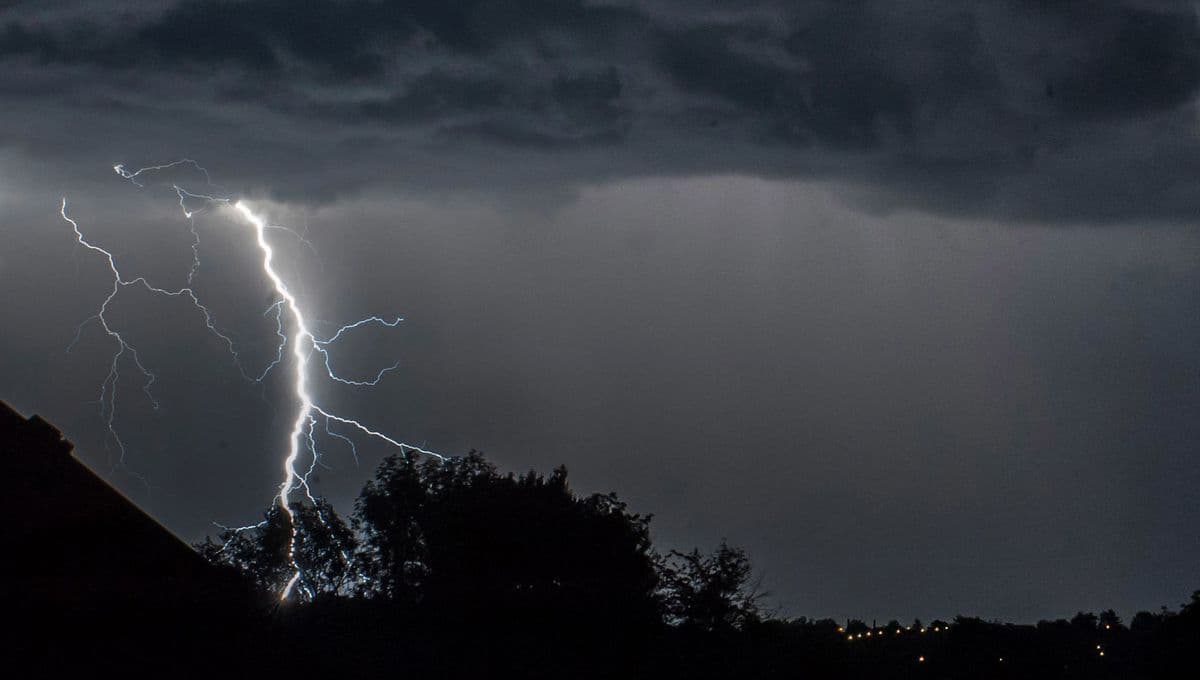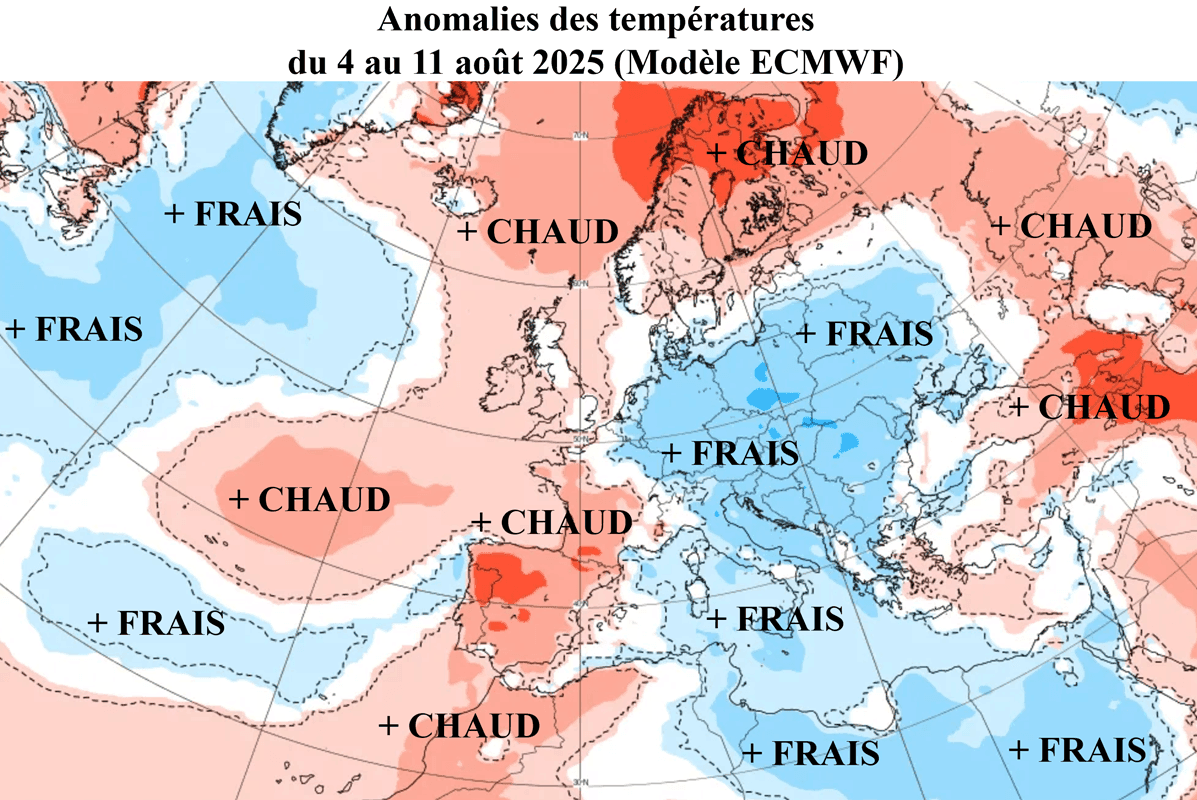France's Shifting Skies: A Day of Contrasts in Summer Weather
Dive into France's July 22nd weather tapestry. From sunny south to stormy north, explore regional impacts, from beach closures to power outages, and how communities adapt.
The Morning's Embrace: A Regional Snapshot
As France awoke on this summer day, the skies painted a remarkably varied picture, setting the stage for a period of dynamic weather. Across the southern half of the country, residents were greeted with abundant sunshine, a quintessential summer morning experience. Yet, a stark contrast emerged further north; a significant cloud cover dominated the northern regions, including the bustling , and stretched westward. , meanwhile, braced for rain, experiencing fine drizzles that extended into the extreme North-West.
Temperatures mirrored this regional divide. While the mercury climbed to a warm 20°C in and 21°C in both and , the south was already heating up considerably. saw a pleasant 25°C, but it was in the south that truly embraced summer's intensity, with temperatures soaring towards a scorching 35°C. Even as the morning progressed, the weather's complex dance continued; a large cloud mass was observed gathering over the extreme North-West, hinting at more widespread overcast conditions to come. Meanwhile, the sun continued to bless , the extreme South-East, and the , promising a bright start to their day. This early mosaic of conditions underscored the diverse climatic influences at play across the .
Midday Dynamics: Navigating Local Weather Shifts
By midday, the morning’s disparate weather patterns had intensified, revealing a complex tapestry of localized shifts across . While the sunny disposition persisted across , the Southeast, and the , other regions found themselves grappling with more challenging conditions. , for instance, experienced vigorous downpours, a stark departure from the gentle start elsewhere. A band of lighter, yet persistent, rainfall stretched across central France, affecting departments like , , , and the , creating a damp interlude for their inhabitants.
Wind became a more prominent player as well. A westerly breeze, gusting at 34 km/h, swept across the North-West and the , influencing the movement of cloud and rain. Concurrently, a south-westerly wind picked up speed in the North-East and , reaching 38 km/h. Temperatures, too, reflected these evolving dynamics; while and remained relatively cool at 17°C, enjoyed a comfortable 23°C. The highest temperature recorded was a still-sizzling 31°C in , located in . These midday developments painted a vivid picture of France’s highly localized weather, where a short distance could mean the difference between bright sunshine and persistent rain, forcing regions to adapt moment by moment.
Beyond the Forecast: Unpacking Weather's Human Impact
The weather's dynamic shifts quickly transcended mere meteorological data, manifesting in profound human consequences across . Violent storms, particularly those that ravaged eastern regions like , , and , exacted a tragic toll. The immediate and most sobering impact was the loss of at least one life in , with six others sustaining injuries, some severe, underscoring the destructive power of these summer tempests. These aren't just statistics; they represent lives irrevocably altered by nature's fury.
Beyond the direct human cost, daily life was significantly disrupted. Thousands of households found themselves plunged into darkness as power grids succumbed to the intense storms, highlighting the vulnerability of essential infrastructure. In a dramatic display of localized weather phenomena, a even struck , causing significant damage and undoubtedly impacting travel. Furthermore, the heavy precipitation led to an unexpected consequence: several beaches were forced to close due to the risk of pollution, jeopardizing summer leisure activities and raising environmental concerns. With 26 departments placed under orange vigilance for rain and storms, these incidents served as a stark reminder of how rapidly weather can shift from a pleasant backdrop to a formidable challenge, demanding immediate and coordinated responses from authorities and citizens alike.
Gazing Ahead: Anticipating the Next Weather Chapter
Looking beyond the immediate aftermath of the day's varied and sometimes violent weather, prepares for its next atmospheric chapter. As Tuesday transitions into Wednesday, the forecast offers a brief but welcome respite. The night is expected to bring clear skies across much of the country, allowing for a moment of calm reflection after a day of significant contrasts and disruptions. This clear interlude provides an opportunity for recovery and preparation, a brief period of stability before the weather gears up for another shift.
However, this calm is merely a prelude. From Wednesday through Thursday, meteorologists anticipate the return of cloudier conditions, signaling the approach of a new weather disturbance. This outlook suggests that the pattern of unsettled summer weather is far from over. While the specifics of this next perturbation will become clearer with time, the general expectation is for more dynamic skies rather than a prolonged period of sunshine. This constant ebb and flow of weather systems is a characteristic feature of France's summer, keeping both forecasters and the public on their toes, always anticipating what the next 24 to 48 hours might bring.
Adapting to the Elements: Resilience in a Changing Climate
's experience with this dynamic summer weather, from scorching heat to violent storms and localized tornados, underscores a broader narrative: the ongoing process of adapting to a changing climate. The intensity and varied nature of these events serve as powerful reminders that what was once considered unusual is becoming more commonplace. Responding effectively requires more than just daily forecasts; it demands a robust framework of resilience.
Practical tools and proactive measures are becoming indispensable. The availability of real-time maps for pollen allergy risks, for instance, allows individuals to manage their health proactively, while forest fire risk maps enable authorities and communities to implement preventative measures and respond swiftly to potential blazes. The widespread orange alerts, beach closures due to pollution, and rapid emergency responses to power outages and human casualties are all tangible examples of how French society is learning to live with and mitigate the impacts of an increasingly unpredictable climate. This continuous cycle of forecasting, warning, responding, and adapting is crucial. It’s a testament to the fact that while we can't control the weather, we can certainly enhance our collective ability to withstand its challenges and build a more resilient future.
Related Articles

Weather's Wild Swings: Navigating France's Dual Climate Realities

Weather's Wild Swings: Navigating France's Dual Climate Realities

France's Volatile Canvas: Unpacking the Extreme Weather Divide

France's Volatile Canvas: Unpacking the Extreme Weather Divide

Unpacking the Orange: Life Under France's Summer Storm Alerts

Unpacking the Orange: Life Under France's Summer Storm Alerts

Decoding the Dog Days: Unraveling France's Tricky August Heat Outlook
